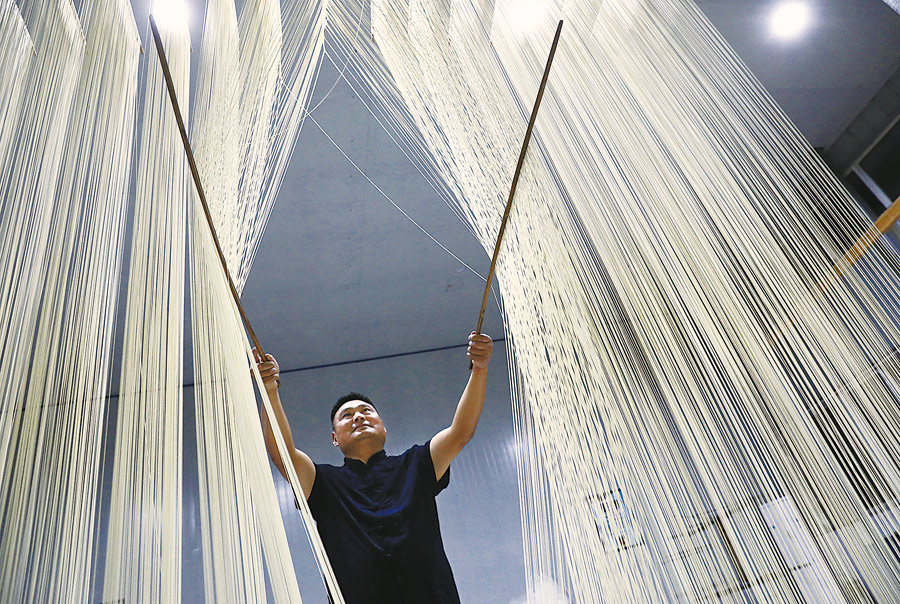

Ancient craft updated
"The process usually starts in the evening," Liu says.
First, wheat flour is mixed with salt water before being kneaded repeatedly to increase elasticity.
"Working on a piece of dough that is about 50 kilograms requires more than two hours of uninterrupted kneading."
Oil is then added, which creates small air pockets in the dough, whereas the salt not only adds flavor but "increases the elasticity of the gluten in the dough, making it easier to hang and stretch, which also contributes to the formation of air pockets", Liu says.
After the dough is finished, it is left to ferment, then rolled and shaped and left overnight.
The next morning, the noodles are twisted around chopsticks and placed in a dedicated trough for further fermentation.
When the noodles are at their optimal resilience, they are "exposed to sunlight and air for two hours until they are about 90 percent dry."
After this long process, the finished noodles are silk thin and carry a silver luster, featuring spiral hollows as small as a needlepoint.
"No matter if it is weddings, birthdays, or other festive occasions, Huangchuan hollow noodles are indispensable," Liu says.